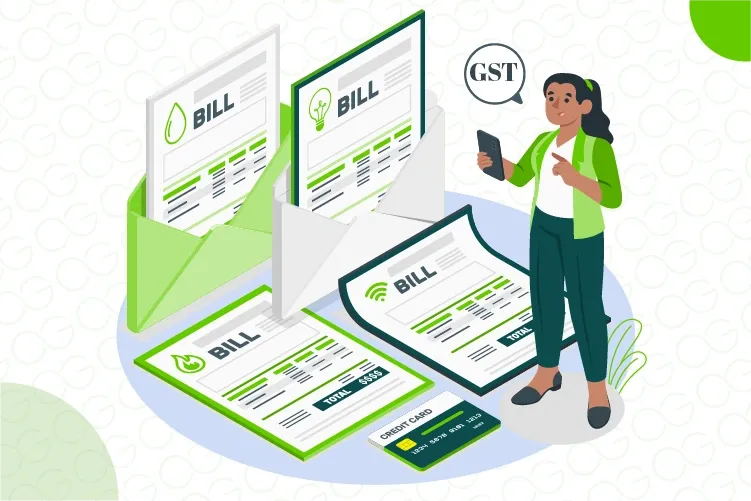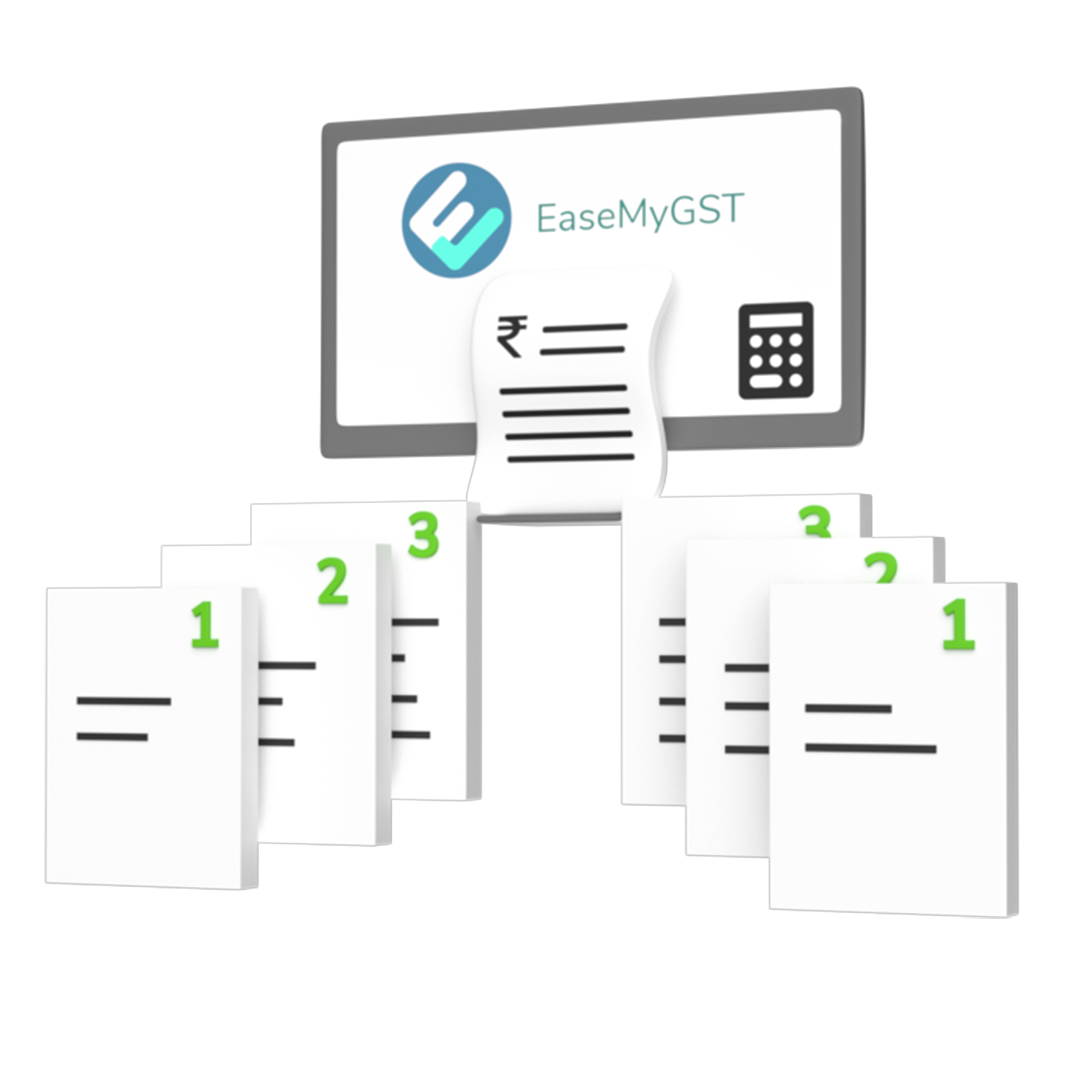Evolution of GST Invoicing Norms: A Comprehensive Guide for Retailers

The introduction of the Goods and Services Tax (GST) in India marked a monumental shift in the country's indirect taxation system. As one of the most ambitious tax reforms, GST unified multiple state and central taxes into a single, streamlined system that aimed to eliminate the cascading effect of taxes and promote ease of doing business across sectors. For retailers in particular, the implementation of GST revolutionized the way invoicing was handled. Over the years, invoicing norms have undergone continuous refinement to cater to the needs of businesses, enhance transparency, and improve compliance.
This comprehensive guide traces the evolution of GST invoicing norms since their inception, focusing on how each change has impacted the retail industry and what retailers need to do to remain compliant and competitive.

Want to simplify GST compliance and speed up your retail operations? Ginesys has the solution.
Understanding GST and Its Impact on Retail Invoicing
GST, which came into effect on July 1, 2017, brought with it a unified tax structure applicable across the entire country. Retailers who previously had to comply with a complex maze of central and state taxes found themselves adapting to a simplified yet highly structured tax regime. Here are the foundational changes GST introduced for retail invoicing:
- Simplified Tax Structure: By eliminating multiple taxes such as VAT, CST, and excise duty, GST created a single tax system. This significantly reduced the complications in calculating taxes for retail transactions.
- Input Tax Credit (ITC): Under GST, retailers can claim credit for the tax paid on purchases. This effectively reduces the overall tax liability, thus lowering the cost of operations.
- Standardized Invoicing: A uniform invoice format mandated by the GST Council ensured consistent and accurate reporting of transactions, thereby improving compliance and reducing the scope for tax evasion.

Year-on-Year Evolution of GST Invoicing Norms
The GST Council has been proactive in reviewing and refining the invoicing norms to align with technological advancements, business needs, and compliance requirements. Here's a year-by-year breakdown of how the invoicing norms have evolved:
2017-2018: Initial Implementation and Basic Structure
- Standard Invoice Format Introduced: Businesses were required to include crucial information like GSTIN, HSN/SAC codes, tax rates, item descriptions, and total tax liability.
- Separate Invoicing for Exempt Goods: Retailers selling goods at both taxable and exempt rates were required to issue separate invoices, resulting in added complexity and paperwork.
2018-2019: Simplification and Flexibility
- Consolidated Invoicing Permitted: Retailers were allowed to club items taxed at the same rate in a single line item with a consolidated tax value, reducing invoice length and complexity.
- Unified Invoicing for Exempt and Taxable Goods: Businesses could issue a single invoice for both taxable and exempt goods, significantly streamlining the billing process.
- Relief from Minor Errors: Tolerance limits were introduced for minor clerical errors in invoices, avoiding harsh penalties for genuine mistakes.
2019-2020: Introduction of E-Invoicing Framework
- Pilot Project Initiated: The government tested e-invoicing in a pilot phase with voluntary participation from large enterprises.
- Infrastructure Development: The Invoice Registration Portal (IRP) was developed to facilitate the real-time generation and validation of e-invoices.
- Preparation for Scale: Businesses were encouraged to align their ERP systems with the upcoming e-invoicing standards.
2020-2021: E-Invoicing Becomes Mandatory for Large Enterprises
- October 1, 2020: E-invoicing became mandatory for businesses with annual turnover exceeding ₹500 crore.
- January 1, 2021: Threshold lowered to ₹100 crore, bringing more businesses under the e-invoicing regime.
2021-2022: Widening the Net
- April 1, 2021: Businesses with turnover over ₹50 crore mandated to comply.
- April 1, 2022: Further reduction to ₹20 crore. Medium-sized retailers now required to generate e-invoices for B2B transactions.
2022-2023: Onboarding Smaller Retailers
- October 1, 2022: E-invoicing applicable for businesses with turnover above ₹10 crore.
- August 1, 2023: Threshold reduced to ₹5 crore, making e-invoicing relevant for a large segment of the retail industry.
2023-2024: Timeline for E-Invoice Reporting
- November 1, 2023: Businesses with AATO (Annual Aggregate Turnover) of ≥ ₹100 crore required to upload e-invoices to the IRP within 30 days of invoice generation.
- Introduction of Real-Time Reporting Concepts: Businesses began investing in real-time integrated systems to ensure timely uploads.
2024-2025: More Inclusive Compliance Requirements
- April 1, 2025: The 30-day reporting timeline extended to businesses with turnover over ₹10 crore. The move ensures timely data availability and greater tax transparency across business categories.
- Preparation for Further Threshold Reductions: Government signaling possible future mandates for businesses with even lower turnover, encouraging widespread adoption.

Struggling with ever-changing GST rules? Stay compliant with expert support from Ginesys.
Key Benefits of E-Invoicing for Retailers
While compliance might initially seem burdensome, e-invoicing offers a host of benefits for retailers:
- Reduction in Tax Evasion: The system prevents manipulation of invoices as data is directly uploaded to the government portal.
- Faster ITC Claims: Real-time reporting accelerates the input tax credit claims, improving cash flow.
- Streamlined Audit Process: With digitized records, audits become more straightforward and transparent.
- Improved Vendor Communication: As invoices follow a standard format, vendors and buyers can better coordinate and reconcile transactions.
Implications for Retailers
The continuous evolution of GST invoicing norms has direct implications for the retail sector:
- System Upgrades: Retailers need to invest in GST-compliant POS and billing software. Cloud-based solutions integrated with e-invoicing APIs are gaining popularity.
- Training and Capacity Building: Staff training is essential to adapt to frequent regulatory changes and to use new invoicing tools effectively.
- Legal Compliance: Penalties for non-compliance can be severe. Maintaining invoice accuracy and timely reporting are key.
- Operational Efficiency: Automated invoice generation and e-invoicing minimize errors, reduce paperwork, and speed up the checkout process.

Best Practices for Retailers to Ensure Compliance and Efficiency
To navigate this dynamic GST environment, retailers should consider the following best practices:
- Stay Updated: Regularly follow GST Council announcements and subscribe to updates from official GST portals.
- Adopt Technology Early: Use e-invoicing-compatible billing software with real-time IRP integration to future-proof operations.
- Conduct Internal Audits: Periodic compliance checks and reconciliation of sales data help avoid mismatches.
Seek Professional Help: Collaborate with tax consultants and compliance experts to ensure end-to-end adherence to GST rules. - Customer Transparency: Share properly itemized GST invoices with customers to build trust and credibility.

Eliminate invoicing errors, accelerate GST compliance, and save time with Ginesys’ powerful GST e-invoicing software.
How Ginesys Helps Retailers Adapt to GST Invoicing Norms
Retailers using Ginesys ERP and POS systems benefit from fully GST-integrated invoicing and compliance tools. Ginesys ensures that retail businesses, regardless of size, can generate GST-compliant invoices, file returns, and manage ITC seamlessly. With automatic updates aligned with government notifications, retailers can focus more on growing their business and less on managing compliance.
Key features include:
- GST-compliant POS billing
- E-invoicing and IRN generation
- Reconciliation reports for audit readiness
- Real-time data dashboards for decision-making
The evolution of GST invoicing norms is a testament to India's ongoing efforts to modernize its taxation infrastructure. For retailers, this journey has brought challenges and opportunities alike. By staying informed, leveraging the right technologies, and following best practices, retailers can not only ensure compliance but also drive operational excellence. As invoicing norms continue to evolve, embracing change proactively will be the key to sustained growth in the GST era.
Retailers should view GST not merely as a compliance requirement but as a tool to streamline operations, enhance transparency, and deliver a superior customer experience. With the right approach and systems in place, the path to GST compliance can also be a path to business success. Book a demo with Ginesys today.
